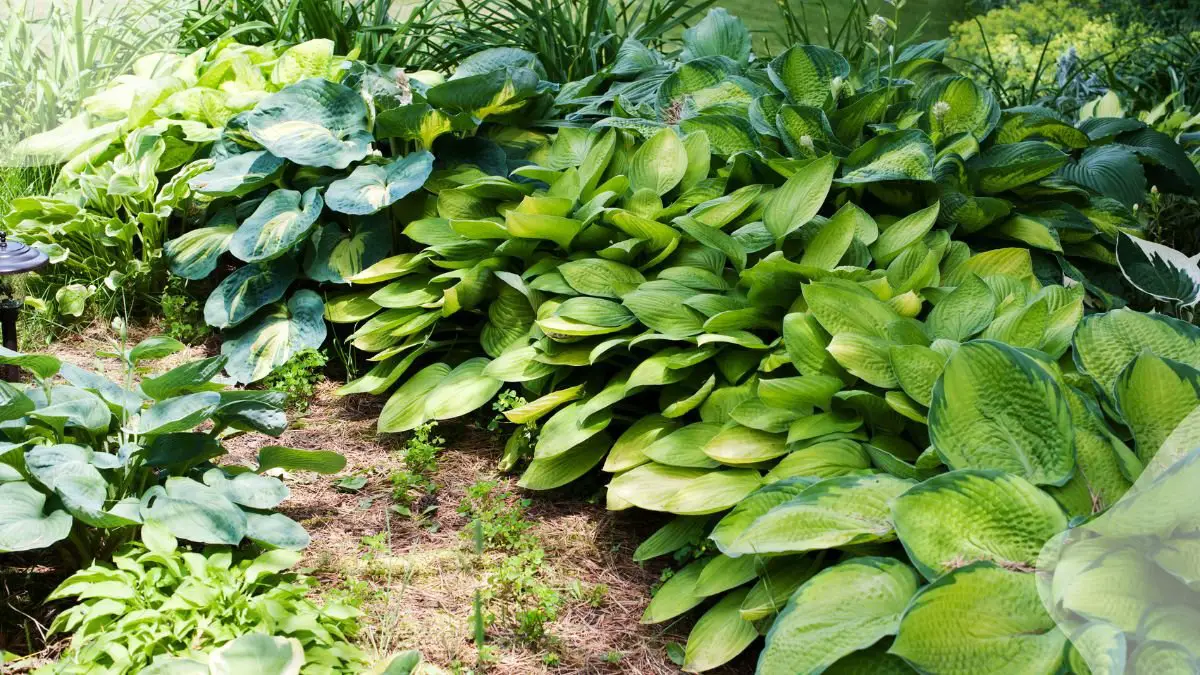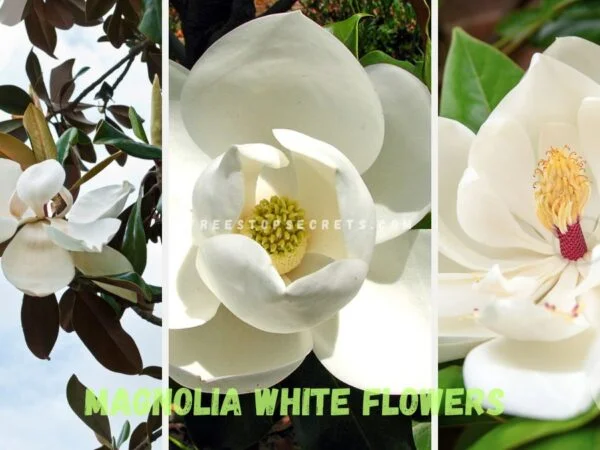Did you know that over 60% of gardeners in zone 5 struggle to find the right perennial plants for shade? If you're one of them, fret not! We have curated a list of resilient and low-maintenance perennial plants that thrive in shade and are perfect for zone 5 gardens. From vibrant hostas to delicate astilbes, these plants not only add beauty but also require minimal upkeep, making them ideal for busy gardeners. Say goodbye to the frustration of wilted plants and hello to a flourishing shade garden with our top picks tailored for your specific climate needs.
Key Takeaways
- Choose Shade-Loving Perennials: Opt for plants like Hostas, Astilbes, and Bleeding Hearts that thrive in shade conditions in Zone 5.
- Regular Maintenance Is Key: Ensure proper care like watering, mulching, and occasional fertilizing to keep your shade garden healthy and vibrant.
- Design with Variety: Create visual interest by combining different textures, heights, and bloom times when planning your shade garden layout.
- Adapt to Seasonal Changes: Be mindful of the changing seasons in Zone 5 and adjust your gardening tasks accordingly to support plant growth.
- Overcome Shade Gardening Challenges: Address issues like lack of sunlight creatively by choosing suitable plants and adjusting garden layouts.
- Enhance Your Garden with Accents: Add non-plant elements like decorative stones, birdbaths, or garden art to elevate the aesthetic appeal of your shade garden.
Understanding Zone 5 Shade Gardens
Zone 5 Climate
Zone 5 climate is characterized by cold winters and moderate summers, ideal for various perennial plants. The temperature range in Zone 5 typically falls between -20°F to -10°F, ensuring a proper winter dormancy period for plants. Geographically, Zone 5 covers a vast area across the United States and Canada.
Shade Types
Different shade conditions include full shade, partial shade, and dappled shade, influencing plant growth significantly. Understanding these shades is crucial as they determine the amount of sunlight plants receive. Full shade areas have minimal direct sunlight, affecting plant selection and growth patterns.
Soil Needs
Perennial plants in Zone 5 require well-draining soil with adequate nutrients to thrive. Soil quality plays a vital role in plant development, impacting root growth and nutrient absorption. Improving soil conditions by adding organic matter like compost enhances soil structure and fertility for optimal plant growth.
Choosing Perennials for Shade
Benefits of Perennials
When gardening in Zone 5, perennial shade plants offer numerous advantages. They require less maintenance, as they return each year without replanting the perennial shade plants collection. Full shade perennials also enhance the garden's aesthetic appeal with their diverse colors and textures.
Growing perennial shade plants collection ensures long-term benefits compared to annuals. These plants establish strong root systems over time, enhancing soil structure and fertility. They contribute to sustainability by reducing the need for frequent replacements.
The sustainability of shade perennials translates into cost-effectiveness. While initial costs may be slightly higher than annuals, favorite perennials prove economical in the long run. Their longevity and ability to thrive in varying conditions make them a wise investment.
Plant Selection Criteria
When selecting perennial shade plants for Zone 5, consider several factors. Assess the amount of sunlight the planting area receives to choose suitable shade perennial varieties. Understanding your garden's specific plant zones is crucial for successful growth.
Match the characteristics of tolerant perennials with your garden's needs. Some favorite shade perennial options include Hostas, Astilbes, and Bleeding Hearts. These plants thrive in shaded areas and add vibrancy to the landscape.
To ensure optimal growth, select colorful perennials that complement each other and create a visually appealing garden. Consider planting a mix of flowers with different bloom times to maintain interest throughout the growing season.
Top Perennials for Zone 5 Shade
Flowering Beauties
Bleeding Heart
Bleeding Heart plants are known for their unique heart-shaped flowers that dangle delicately from arching stems. These plants thrive in partial shade and require moist, well-drained soil to flourish. To maintain healthy Bleeding Heart plants, ensure consistent watering and mulching to retain moisture.
Columbine
Columbine is a stunning perennial choice for Zone 5 shade gardens, boasting intricate spurred flowers in various colors. These plants prefer partial shade and well-drained soil. Columbine thrives in plant zones 3-9, making it a versatile addition to any garden. Ensure adequate air circulation around the plant to prevent mildew.
Foxglove
Foxglove plants are characterized by their tall spikes of tubular flowers, adding vertical interest to shady areas. Ideal for Zone 5, Foxglove thrives in part shade to full shade conditions. To care for Foxglove plants, provide regular watering, fertilization, and deadheading to promote continuous blooming.
Foliage Favorites
Hosta
Hostas are prized for their lush foliage and come in a variety of colors, shapes, and sizes, making them versatile in shade gardens. These plants prefer part to full shade and thrive in plant zones 3-9. When planting Hostas, ensure they receive adequate moisture and fertilization for optimal growth.
Coral Bells
Coral Bells add a pop of color to shady spots with their vibrant foliage in shades of green, purple, and silver. These plants prefer part shade conditions and grow well in plant zones 4-9. To maintain healthy Coral Bells, provide well-draining soil, occasional fertilization, and division every few years.
Japanese Pachysandra
Japanese Pachysandra is a low-maintenance ground cover with glossy evergreen leaves, perfect for shady areas in Zone 5. These plants thrive in full shade to part shade and well-drained soil. When planting Japanese Pachysandra, ensure proper spacing for optimal growth and apply a layer of mulch for moisture retention.
Ground Covers
Creeping Myrtle
Creeping Myrtle serves as an excellent ground cover option for shaded areas, forming a dense mat of green foliage. These plants prefer part shade to full shade and grow well in plant zones 4-9. When planting Creeping Myrtle, ensure regular watering and occasional trimming to maintain its neat appearance.
Barrenwort
Barrenwort plants feature delicate heart-shaped leaves and charming flowers, thriving in shady locations in Zone 5. These plants prefer part to full shade conditions and well-drained soil. To care for Barrenwort, provide consistent moisture levels, avoid overhead watering, and divide crowded clumps every few years.
Plant Care and Maintenance
Watering Tips
Proper watering is crucial for the health of perennial plants in Zone 5. Adequate hydration ensures plant vigor and resilience against harsh weather conditions. It's essential to water deeply but less frequently to encourage deep root growth.
To determine watering frequency, consider the specific needs of each plant species. Some may require more moisture, while others thrive in drier conditions. Monitor soil moisture levels regularly to avoid both overwatering and underwatering, which can stress the plants.
Mulching Techniques
Mulching offers various benefits for perennial plants in Zone 5, such as moisture retention and weed suppression. Organic materials like shredded bark or compost can improve soil fertility and structure. Inorganic mulches like stones provide long-lasting weed control.
When mulching, ensure a layer about 2-4 inches thick around the base of the plants, leaving some space around the stems to prevent rotting. Mulch should be replenished annually to maintain its effectiveness in regulating soil temperature and retaining moisture.
Pruning Practices
Pruning plays a vital role in maintaining healthy perennial plants by promoting new growth and improving overall aesthetics. In Zone 5, prune plants during their dormant season to avoid stressing them during active growth periods. Remove dead or diseased branches promptly to prevent the spread of infections.
Regular pruning encourages air circulation within the plant canopy, reducing the risk of fungal diseases. Use sharp, clean tools to make precise cuts at a 45-degree angle just above a bud or lateral branch. This practice stimulates branching and flowering, leading to a more robust plant structure.
Designing Your Shade Garden
Planning Layouts
When designing garden layouts for perennial plants in Zone 5, consider the specific needs of each plant. Research the mature size and growth habits to ensure proper spacing. Create a map or plan to visualize plant placement and arrangement.
To achieve a balanced look, vary the heights and shapes of plants. Consider planting taller varieties at the back and shorter ones in the front. Group plants with similar water and light requirements together for efficient care.
Incorporate hardscape elements like pathways or garden structures to enhance the overall design. These features can provide focal points and define different areas within your shade garden.
Combining Textures
Combining different plant textures in Zone 5 gardens adds depth and visual interest. Pair smooth-leaved plants with coarse or spiky ones for contrast. Mix fine-textured foliage with bold, large leaves for a dynamic look.
Create drama and intrigue by blending various leaf shapes and sizes. For example, pair feathery ferns with broad hosta leaves. Incorporate ornamental grasses for movement and unique texture.
Consider including plants with interesting bark or stems to add winter appeal to your garden. The combination of varied textures creates a visually appealing landscape that evolves throughout the seasons.
Color Schemes
Color schemes play a crucial role in enhancing the aesthetics of Zone 5 gardens. Choose a primary color theme based on your preferences and the mood you want to create in your garden. Use color wheels to guide your selection process.
Balance bright hues with softer tones for a harmonious look. Incorporate contrasting colors to create focal points and add excitement to your garden design. Utilize foliage colors along with flowers for continuous interest.
Experiment with monochromatic schemes or complementary color combinations to achieve different effects. Remember to consider how colors will change as plants mature and bloom throughout the growing season.
Overcoming Challenges in Shade Gardening
Pest Management
Pests like aphids and slugs commonly trouble perennial plants in Zone 5. These pests can damage foliage and hinder plant growth. To identify these pests, inspect plants regularly for any signs of infestation, such as holes in leaves or sticky residue. Implementing physical barriers like copper tape can deter slugs, while introducing beneficial insects like ladybugs can control aphid populations. Chemical solutions like neem oil or insecticidal soap can also effectively manage pest infestations.
Disease Prevention
Preventing diseases is crucial for sustaining healthy plants in Zone 5. Common plant diseases include powdery mildew and root rot, which thrive in humid conditions. To prevent these diseases, ensure proper air circulation by spacing plants adequately and avoiding overhead watering. Applying fungicides preventatively can also safeguard plants from fungal infections. Boosting plant immunity through regular fertilization and maintaining optimal growing conditions can enhance resilience against diseases.
Soil Improvement
Improving soil quality is essential for the success of shade gardens in Zone 5. Techniques like composting and mulching help enrich the soil with nutrients and improve its structure. Adding organic matter like compost or aged manure enhances soil fertility, promoting healthier plant growth. Incorporating soil amendments such as perlite or vermiculite can aid in drainage and aeration, crucial for preventing waterlogged soil that leads to root rot. Healthy soil supports robust root development, nutrient uptake, and overall plant vitality.
Seasonal Considerations for Zone 5 Gardens
Spring Favorites
In Zone 5, gardeners can enjoy a vibrant display of spring-blooming perennials. These plants include Tulips, Daffodils, and Bleeding Hearts. They thrive in the cool temperatures of spring and add a pop of color to shaded areas. Plant these perennials in well-draining soil and partial shade for optimal growth.
e spring favorites like Bleeding Hearts prefer moist soil, while others like Tulips require good drainage. Ensure proper spacing between plants to allow for adequate air circulation. Regular watering and mulching can help retain soil moisture and promote healthy growth.
- Pros:
- Adds vibrant colors to shady areas
- Low maintenance once established
- Cons:
- Some varieties may require specific care instructions
Summer Survivors
Zone 5 gardens can benefit from the resilience of summer-blooming perennials such as Lavender, Coneflowers, and Black-Eyed Susans. These plants are known for their heat and drought tolerance, making them ideal choices for hot summer months. Provide these perennials with well-drained soil and full sun exposure for best results.
Summer survivor plants like Coneflowers attract pollinators, while Lavender offers aromatic benefits. Deadhead spent flowers regularly to encourage continuous blooming throughout the season. Mulching around the base of these plants can help conserve soil moisture during dry spells.
- Ensure proper watering during extreme heat conditions
- Deadhead spent flowers to promote new growth
Autumn Interest
As autumn approaches, Zone 5 gardens can showcase a stunning array of autumn-flowering perennials like Sedum, Asters, and Chrysanthemums. These plants offer a variety of fall foliage colors, textures, and blooms that add visual interest to shaded areas. Choose perennials with different bloom times for a prolonged display of autumn beauty.
Autumn interest plants like Sedum feature succulent leaves that change color in the fall, while Asters produce daisy-like blooms in shades of purple and pink. Plant these perennials in well-draining soil and provide adequate sunlight for optimal growth.
- Select perennials with varying bloom times for continuous color
- Prune dead foliage in late fall to promote healthy growth next season
Enhancing Your Shade Garden
Adding Accents
Accent plants play a crucial role in enhancing garden aesthetics by adding visual interest and focal points. They can include plants with unique shapes, textures, or colors that stand out in a shaded garden. Examples of accent plants for Zone 5 gardens include Japanese painted ferns, Astilbe, and Heuchera.
Placing accent plants strategically around the garden can create a balanced and harmonious look. Consider planting them near pathways or at the center of a garden bed to draw attention. Regular watering and fertilizing are essential for these plants to thrive and maintain their vibrant appearance.
Incorporating Hardscape Elements
In Zone 5 gardens, hardscape elements such as garden structures, pathways, and features can complement perennial plants by adding structure and visual interest. Arbors, trellises, and pergolas can provide vertical elements that contrast with the lush greenery of shade plants.
When integrating hardscape elements, ensure they blend seamlessly with the overall garden design. Use materials like wood, stone, or metal that complement the natural surroundings. Pathways made of gravel or stepping stones can guide visitors through the garden while enhancing its charm.
Attracting Wildlife
Attracting wildlife to Zone 5 gardens offers numerous benefits, including pollination, pest control, and a deeper connection with nature. Plants like bee balm, echinacea, and milkweed attract pollinators like bees and butterflies, contributing to a thriving ecosystem.
To create a wildlife-friendly environment, provide sources of water such as bird baths or small ponds. Incorporate native plants that offer food and shelter for birds, butterflies, and beneficial insects. Avoid using pesticides to protect the delicate balance of your garden ecosystem.
Summary
You've now gained valuable insights into creating a thriving shade garden in Zone 5. By understanding the unique conditions, selecting suitable perennials, and implementing proper care techniques, you're well-equipped to design a beautiful and sustainable garden. Overcoming challenges and considering seasonal variations will further enhance your gardening experience. Remember, with dedication and the right knowledge, your shade garden can flourish year after year.
Now it's time to put your newfound knowledge into action! Start planning your Zone 5 shade garden, incorporating the top perennials and design tips shared. Embrace the joys of gardening in the shade, and watch as your outdoor space transforms into a serene oasis. Happy gardening!
Frequently Asked Questions
What are Zone 5 shade gardens?
Zone 5 shade gardens refer to garden areas in USDA hardiness zone 5 that receive limited sunlight, making them suitable for shade-loving plants.
Which perennial plants thrive in Zone 5 shade conditions?
Popular perennial plants for Zone 5 shade include hostas, astilbes, ferns, coral bells, and bleeding hearts due to their adaptability to low-light environments.
How can I maintain perennials in a Zone 5 shade garden?
Ensure proper watering, mulching, and occasional fertilization to maintain the health and vigor of perennial plants in your Zone 5 shade garden.
What challenges might I face in gardening with shade in Zone 5?
Common challenges in Zone 5 shade gardening include lack of sunlight, soil moisture control, and selecting plants that thrive in low-light conditions.
How can I design an aesthetically pleasing shade garden in Zone 5?
Incorporate a variety of textures, heights, and colors by combining different shade-loving plants to create visual interest and balance in your Zone 5 shade garden.
Image Source: Paid image from CANVA





